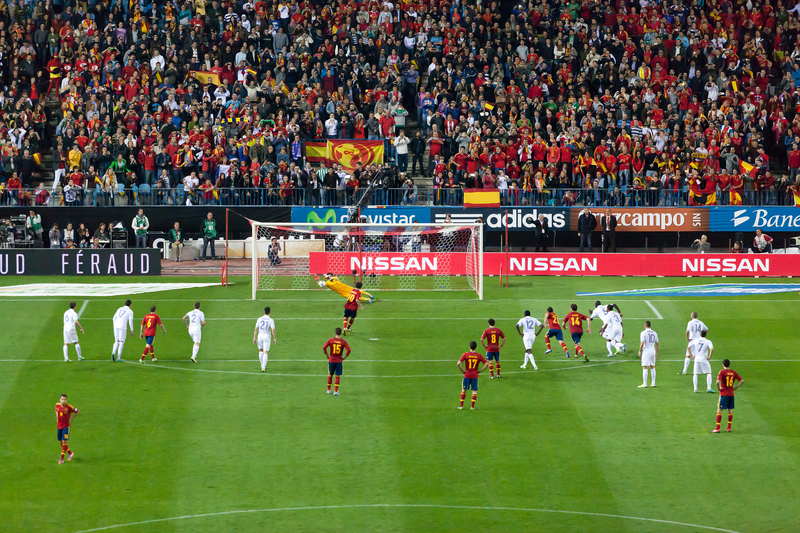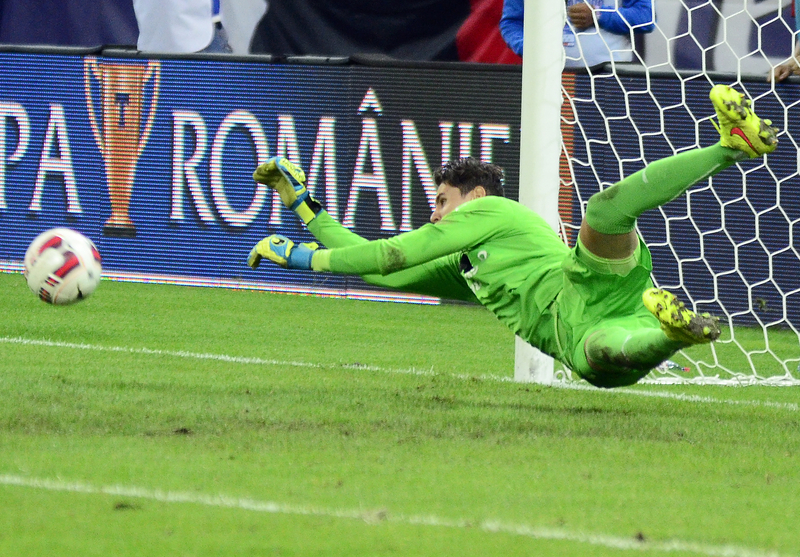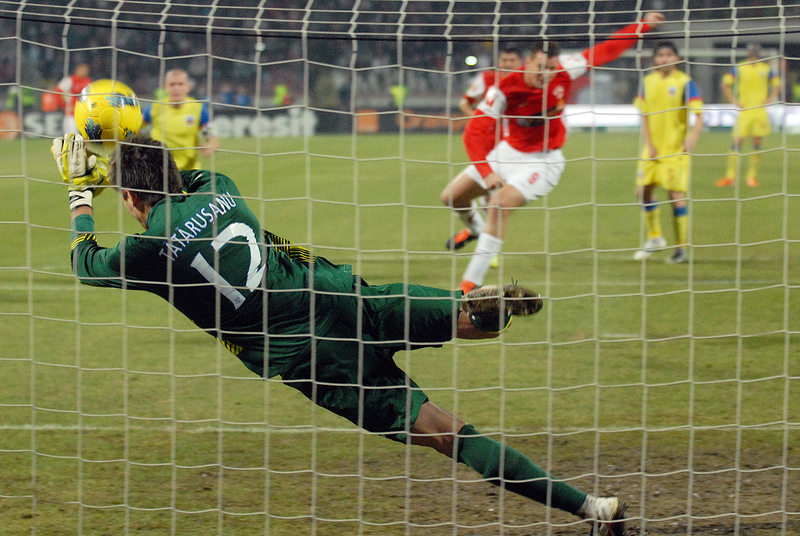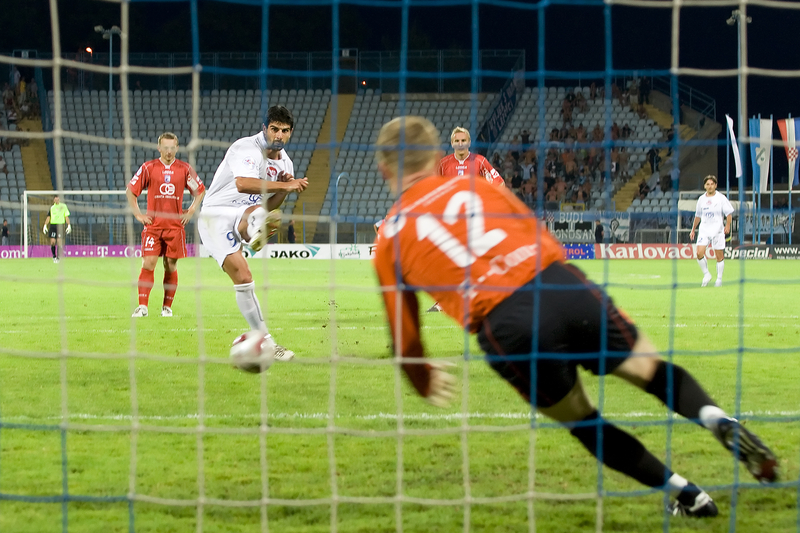Last updated on November 8th, 2023 at 10:23 am
Penalty kicks occur whenever a player commits a foul in their own penalty area. Several fouls would cause penalty kicks, including handball fouls and many physical penalties. Illegal contact like charging, pushing, tripping, and tackles result in penalty kicks.
Referees can also assign penalty kicks due to severe or egregious infractions like throwing an item onto the field or biting an opponent.
A referee may award a penalty kick, a yellow card for some fouls, or even a red card. These cards occur because an offending player committed a single, egregious foul to warrant the penalty kick, like a severe tackle. A referee may assign several different penalties if a defensive player commits multiple fouls on a single play.
Where Does a Player Shoot a Penalty Shot From on the Field?
Only the goaltender and the kicker can be in the penalty box at the start of a penalty kick. All other players must remain beyond the penalty arc and wait until the shooter kicks the ball. Before the kick, the ball is on a field marking called the penalty mark, which is 11 meters away from the goal line. The penalty kicker can only kick the ball forward and make juking or feinting motions during the run-up before they kick the ball.
What Does the Goalie Do During a Penalty Shot?
The goalkeeper can move before the kick but must stay between the two goal posts without touching the goal net, crossbar, or goalposts themselves. To allow a fair kick attempt, they must have at least one foot on or behind the goal line. Once the shooter kicks the ball, the goalie needs to block the shot or stop the ball from going into the net.
Can There Be New Penalties During a Penalty Kick?
A few penalties can happen during a penalty kick, leading to the referee waving off the kick attempt. For example, encroachment by the defending team results in a re-kick, while encroachment by the attacking team waives the attempt and results in an indirect free kick. The attacking team gets an indirect free-kick if the kicker moves the ball backward.
What Happens After the Penalty Kick?
Two outcomes occur from a penalty kick if there are no penalties.
- The attacking team receives a goal if the defending goalkeeper misses the penalty kick and the ball goes into the net.
- If the goalie makes a save, both teams resume playing with no changes to the box score.
What is the Penalty Shootout in a Soccer Game?
The penalty shootout tiebreaker gives each team five kicks to win the game. A winner occurs when either team gets three goals first or has an insurmountable lead. Kicks in a shootout are laid out similarly to those during regulation time.
To start the sequence of penalty kicks, the referee will flip a coin to decide which team gets the first kick. Then, each team will take turns fielding a kicker. If there is no winner after five rounds, the shootout goes into a sudden-death contest, where the first team to score wins.
How Often are Penalty Shots Successful?
According to an article from WBUR in 2014, 81% of World Cup penalty shots are successful goals. Another more recent data trend from InStat shows that over 70% of penalty shots result in a goal for men’s and women’s soccer.
Conclusion about Penalty Kicks in Soccer
Penalty kicks are one of the most common fouls during a match. If any player commits a penalty in their penalty area, the opposing team will be awarded penalty kicks as a result. Since a player is more likely than not to score on a penalty kick, this can be a momentum-shifting part of the game, which is exciting for fans on both sides of the pitch to watch.
Similar Posts:
What is a Friendly Match in Soccer?
What is a Midfielder in Soccer?
Greg Kristan, owner of The Stadium Reviews, LLC and TM Blast, LLC, brings his extensive experience visiting over half of the MLB ballparks, along with numerous MLS, NHL, NBA, and NFL venues, to provide in-depth coverage on the bag policy, food options, and parking. He has also been interviewed about his experiences on several sports podcasts.






